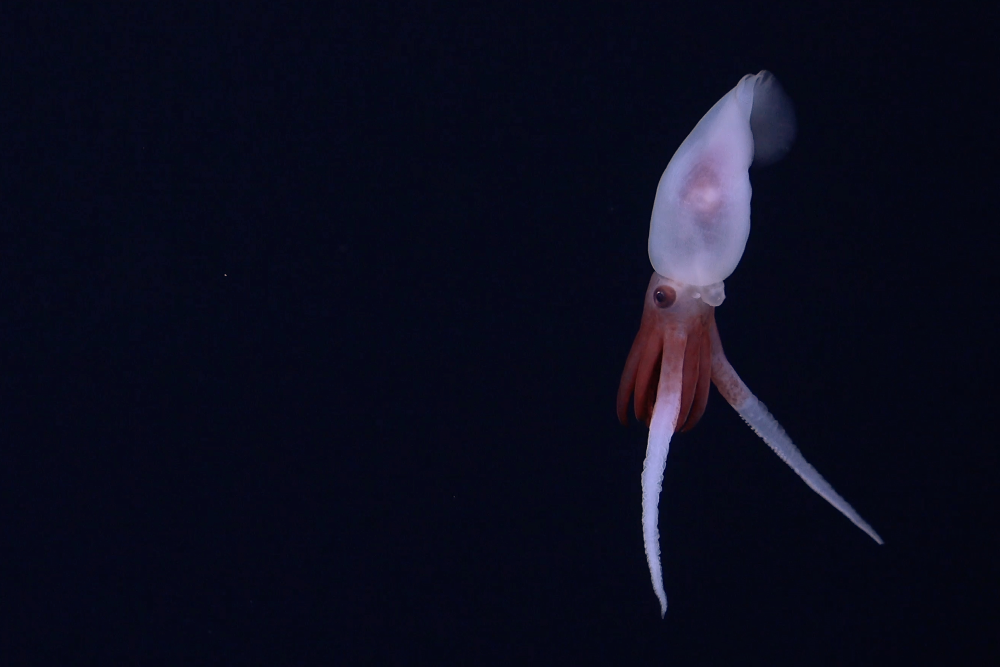A new seamount and 20 potentially new-to-science species have been discovered off the coast of Chile during an expedition to map uncharted parts of the seafloor. Armed with their trusty ROV SuBastian, the clever folks over at Schmidt Ocean Institute were surveying the unnamed and unexplored seamount when they spotted two flying spaghetti monsters. Don’t you just love the ocean?
Known to science as Bathyphysa conifera, the flying spaghetti monster is a kind of siphonophore, making it a relative of the “long stringy thingy” and one of our closest invertebrate relatives, the vagina salp. Other rare sightings included the first-ever record of a Casper octopus in the Southern Pacific. a critter we’ve known about since 2016 but still never been able to describe and formally name because nobody has collected one yet.
They also captured the first-ever footage of a live Promachoteuthis squid, a genus so rare we only know of the three species based on specimens collected in the late 1800s. We’ve only ever been able to study the genus based on dead individuals retrieved from nets – until now.
The first footage of a live Promachoteuthis squid.
The expedition lasted 28 days and spanned 10 seamounts in the international waters of the Nazca Ridge, an underwater mountain chain that’s currently under consideration for designation as a marine protected area. It was led by Schmidt Ocean Institute in partnership with Ocean Census and the Center for Coastal and Ocean Mapping/Joint Hydrographic Center at the University of New Hampshire.
“The seamounts of the Southeastern Pacific host remarkable biological diversity, with species found nowhere else to date,” said Prof. Alex David Rogers, Science Director of Ocean Census in a statement emailed to IFLScience. “The work our taxonomists have conducted aboard Falkor (too), supported by Schmidt Ocean Institute team, will significantly enhance our understanding of the distribution of remarkable life forms on these underwater mountains, including several that have never before been mapped or seen by human eyes.”
The previously unknown underwater mountain uncovered during the expedition sits at 3,109 meters (1.9 miles) tall and is home to a thriving deep-sea ecosystem. Onboard mapping technologies jotted down the lay of the land, while the underwater robot ROV SuBastian went noodling around sponge gardens and ancient corals to see what they could find.
One of the most remarkable finds during the expedition included an ancient coral garden about the size of three tennis courts. Multiple expeditions have journeyed to the ridge, but across the 10 sea mounts explored on this one, they collected 20 potential new-to-science species.
The Casper octopus is a rare cutie.
“Upon concluding our third expedition to the region, we’ve explored around 25 seamounts on the Nazca and Salas y Gómez Ridges,” added Co-Chief Scientist and Schmidt Ocean Institute Marine Technician, Tomer Ketter. “Our findings highlight the remarkable diversity of these ecosystems, while simultaneously revealing the gaps in our understanding of how the seamount ecosystems are interconnected. We hope the data gathered from these expeditions will help inform future policies, safeguarding these pristine environments for future generations.”
Source Link: Flying Spaghetti Monsters And 20 Potential New Species Spotted At Sea Mounts
